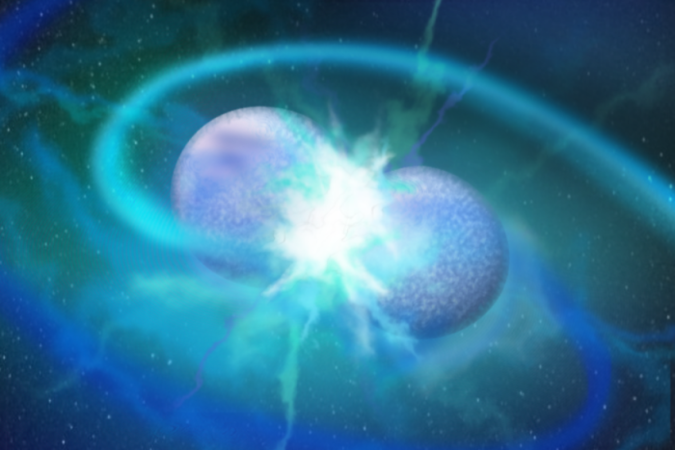Published on 02/15/2022 16:10
Impression of a rare type of stellar merger event between two white dwarf stars – (credit: Nicole Rendell)
The stars we know have surfaces made of hydrogen and helium, however, a new discovery from the University of Tübingen in Germany may have observed stars with surfaces covered in carbon and oxygen. In addition, they have temperatures and radii that indicate that they can still burn helium in their cores – a characteristic typically seen in more advanced stars.
According to the researchers, it is possible that these stars were formed due to a rare stellar fusion event.
study was Published in the scientific journal Monthly Notices of the Royal Astronomical Society Along with other research by the Universidad Nacional de La Plata in Argentina, and the Max Planck Institute for Astrophysics in Germany, to explain how and why these stars exist.
Research indicates that the formation of these stars occurred after a very rare type of stellar merger event between two white dwarf stars. White dwarf stars are glowing embers of stars that have burned all their hydrogen fuel. About 95% of all stars will eventually become white dwarfs, even the Sun..
“Normally, white dwarf mergers do not lead to the formation of carbon-oxygen-rich stars, but we believe that for binary systems that form with very specific masses, a carbon-oxygen-rich white dwarf can be disrupted and end up on top of helium-rich, resulting in the formation of these stars. ‘,” explains Miller Bertolami, of the Instituto Astrofísica de la Plata and one of the authors of the second article.
However, there is no current stellar evolutionary model that can fully explain newly discovered stars. Researchers will need improved models to assess whether these mergers can actually occur and thus help them better understand these stars. It also provides deeper insight into the late evolution of binary systems and how their stars change mass as they evolve.
Until astronomers develop more accurate models for the evolution of binary stars, the origin of helium-capped stars will be up for debate. Normally, we would expect stars with such surface compositions to have already finished burning helium in their cores and are on the way to becoming white dwarfs. These new stars pose a serious challenge to our understanding of stellar evolution.” Points out Klaus Werner, author of the first study from the University of Tübingen.

“Incurable thinker. Food aficionado. Subtly charming alcohol scholar. Pop culture advocate.”







More Stories
Rumors say that Take-Two is preparing to announce a new game in the Mafia series
WhatsApp end of device list confirmed
Studios are already working on games optimized for the PS5 Pro